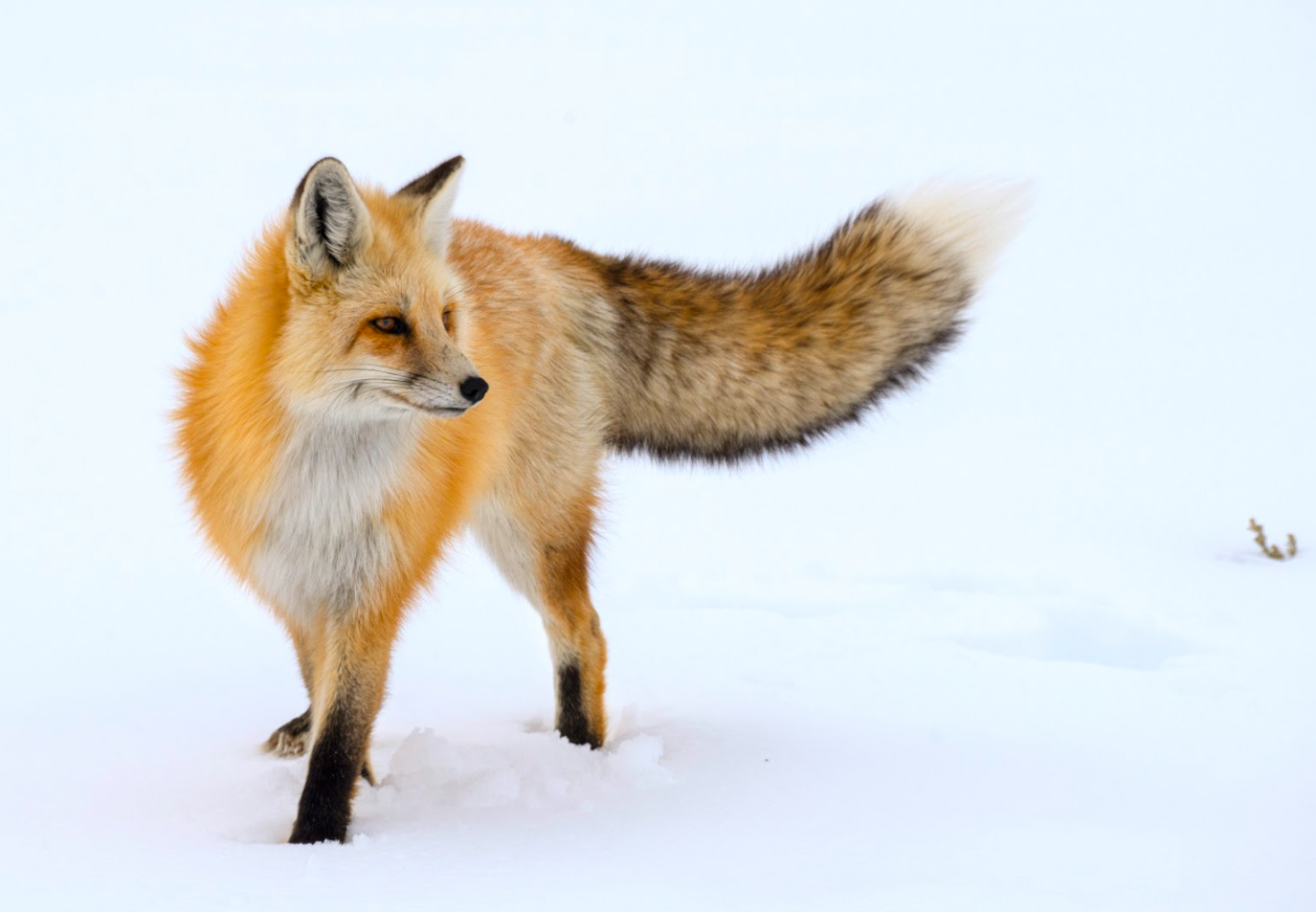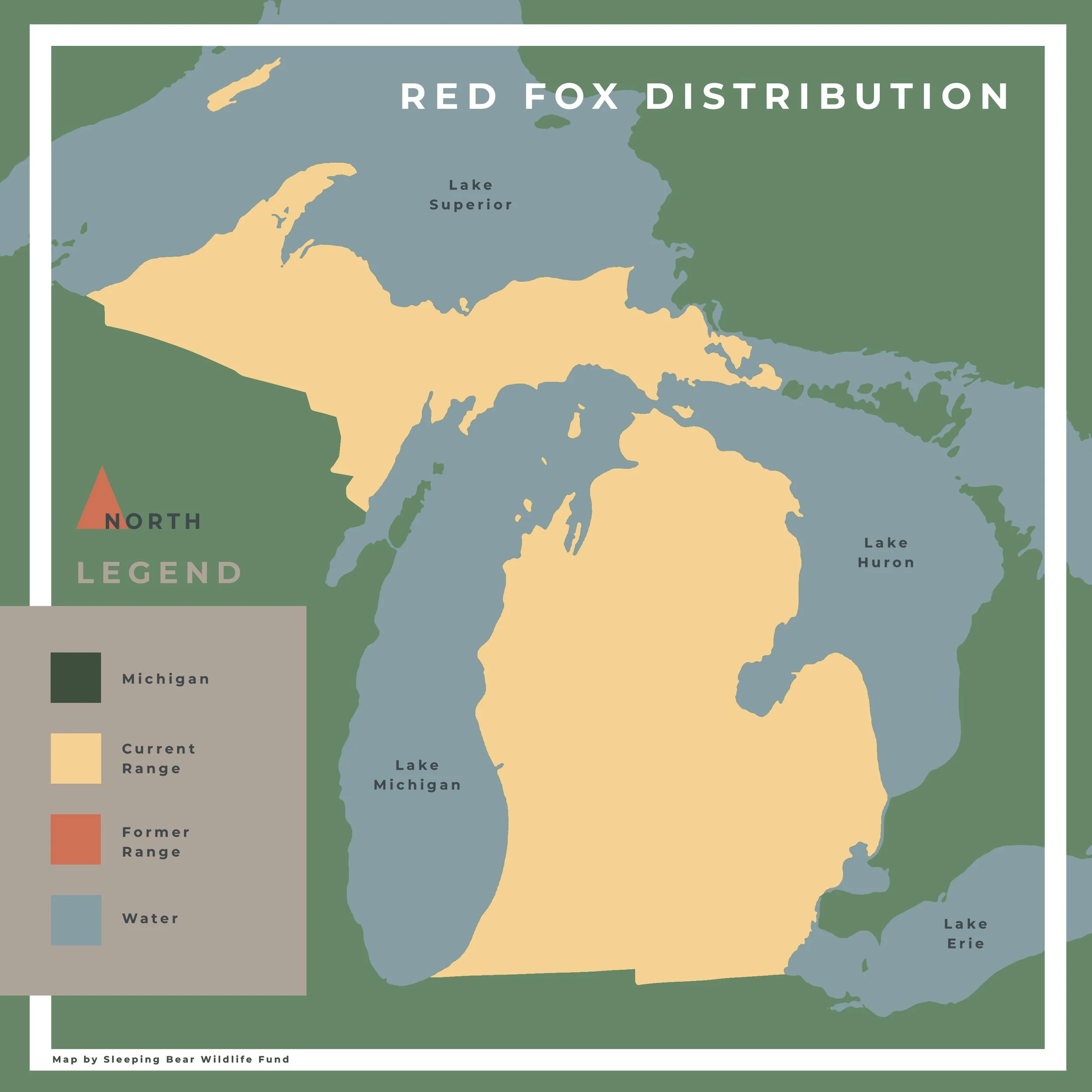
American red fox
Vulpes vulpes fulvus
Cunning like a fox
Red foxes are iconic and adaptable carnivores found throughout Michigan's diverse landscapes, from urban areas to rural countryside. Sporting striking russet fur and a characteristic bushy tail, these charismatic canines are highly adaptable hunters, preying on small mammals, birds, insects, and even fruits and vegetables when necessary. In Michigan, red foxes play a vital role in controlling rodent populations, thus indirectly benefiting agricultural interests. Despite their adaptability and resilience, red foxes face challenges such as habitat loss, road mortality, and disease transmission. Nevertheless, their ability to thrive in a variety of environments speaks to their remarkable resilience and adaptability.
Conserving red foxes
Implementing habitat conservation measures, such as preserving natural landscapes and minimizing habitat fragmentation, ensures suitable areas for foxes to thrive. Reducing human-wildlife conflicts through responsible waste management and securing livestock can prevent conflicts and negative interactions. Supporting initiatives that promote coexistence and conservation education helps raise awareness about the importance of red foxes and their role in ecosystems. Lastly, advocating for policies that protect wildlife habitats and regulate hunting and trapping practices contributes to long-term fox conservation efforts. By taking these steps, individuals can play a vital role in safeguarding red fox populations for future generations.
Red foxes play a significant role in ecosystems, contributing to biodiversity and maintaining ecological balance. As opportunistic hunters, they help regulate populations of small mammals and insects, thereby indirectly impacting vegetation and preventing overgrazing. Despite their resilience, red foxes may require rehabilitation in instances of injury, illness, or displacement due to human activities. Rehabilitating red foxes helps mitigate human-induced threats and ensures their continued presence in ecosystems. It also upholds ethical considerations by providing care for individual animals in need, promoting their welfare, and contributing to the broader goal of wildlife conservation.
Red fox biology
Red foxes vary in size depending on factors such as age, sex, and geographic location, but they typically measure between 18 to 35 inches in length from nose to tail tip and stand about 14 to 16 inches tall at the shoulder. Their distinctive bushy tails can add an additional 12 to 18 inches to their length. On average, red foxes weigh between 7 to 15 pounds, with males generally larger than females. In the wild, red foxes typically live for 2 to 4 years, although they can survive up to 10 years or more in managed care. Breeding season for red foxes occurs in late winter to early spring, with mating typically taking place from January to March in the Northern Hemisphere. After a gestation period of approximately 51 to 53 days, females give birth to a litter of 4 to 6 pups on average.
Bad pets
Red foxes may seem appealing as pets due to their charismatic appearance and association with folklore, but they are not suitable pets for several reasons. Firstly, red foxes are wild animals with complex social and behavioral needs that are difficult to meet in a domestic setting. Their natural behaviors, such as digging, scent marking, and hunting, can be destructive and incompatible with indoor living spaces. Additionally, red foxes have specialized dietary requirements that may be challenging to replicate in captivity, requiring a varied diet of live prey, fruits, and vegetables. Despite attempts at domestication, red foxes retain their wild instincts and may exhibit unpredictable or aggressive behavior, posing risks to both humans and other pets. Furthermore, keeping red foxes as pets may contribute to the demand for wildlife trafficking and encourage illegal trapping and trade. Overall, the unique needs and behaviors of red foxes make them unsuitable candidates for domestication and highlight the importance of respecting their wild nature and conserving them in their natural habitats.
How we conserve red foxes
We contribute to red fox conservation through our rehabilitation efforts, providing care and support to injured, sick, or orphaned red foxes in need. Rehabilitation efforts typically involve rescuing injured or orphaned foxes, providing veterinary treatment and rehabilitation services, and ultimately releasing them back into suitable habitats once they have recovered and are deemed fit for survival in the wild. By rehabilitating red foxes, we not only help individual animals but also contributes to the overall conservation of the species by responding to human-induced threats and promoting their welfare. Additionally, we engage in public outreach and education initiatives to raise awareness about red fox conservation issues and encourage responsible coexistence with wildlife, furthering its conservation impact beyond rehabilitation efforts alone.



